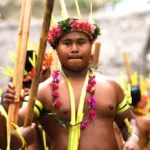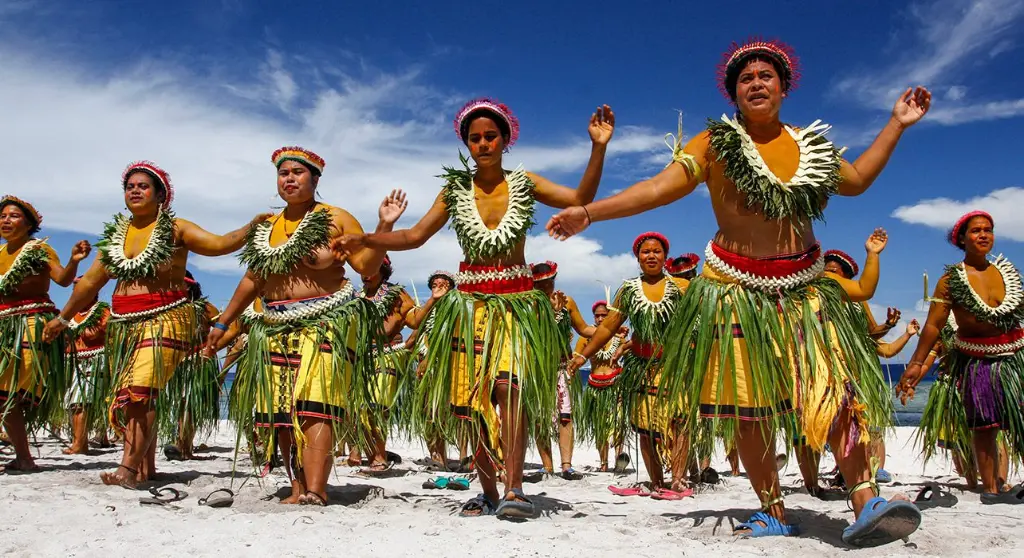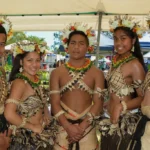Palauan Traditional Dress: A Window into Island Heritage
Palau, an enchanting island nation in the Pacific, boasts a rich cultural heritage reflected in its traditional clothing. The attire of Palauans is a vivid representation of their history, values, and connection to the natural world.
From the use of local materials to intricate designs symbolizing cultural pride, Palauan traditional clothing remains a cornerstone of the nation’s identity.
Historical Overview of Palauan Traditional Attire
Traditional clothing in Palau is rooted in practicality and artistry, crafted using resources like pandanus leaves, coconut fibers, and hibiscus bark. Historically, clothing served not only as protection against the tropical climate but also as a symbol of social status and community ties.
Palauan clothing traditions evolved to include ceremonial attire used in special events such as weddings, village gatherings, and traditional dances. These garments highlight the creativity and skills of local artisans, ensuring that the island’s rich heritage is preserved through generations.
See also Traditional clothing in Micronesia (Federated States of Micronesia)
Traditional clothing in Micronesia (Federated States of Micronesia)What Is the Traditional Clothing in Palau?

Traditional clothing in Palau varies by gender and occasion, with each item reflecting the island’s culture and values.
👔 Men’s Traditional Attire
- Uruul: Men often wore uruul, a simple loincloth made from woven pandanus or hibiscus bark. This garment was lightweight and functional, ideal for the humid climate.
- Dance Costumes: For ceremonial dances, men wear elaborate skirts made of hibiscus bark, decorated with natural dyes and shells. These costumes are often paired with necklaces and armbands crafted from coconut shells or boar tusks.
👗 Women’s Traditional Attire
- Grass Skirts (Lul): Women traditionally wore lul, grass skirts woven from pandanus or hibiscus fibers. These skirts could be plain for daily use or richly dyed and layered for special occasions.
- Wraps and Shawls: During formal events, women would wear wraps or shawls made from bark cloth, adorned with intricate patterns and vibrant colors.
- Headdresses: Floral crowns or woven headbands enhanced ceremonial outfits, symbolizing beauty and respect.
🌺 Accessories for Both Genders
- Shell Necklaces: Necklaces crafted from cowrie or other local shells were a common adornment, showcasing Palau’s connection to the sea.
- Headbands and Belts: Intricately woven headbands and decorative belts added both function and style to traditional outfits.
Regional Variations in Traditional Clothing
Palau’s islands exhibit subtle differences in clothing styles, influenced by local resources and cultural practices.

Northern Palau
- Natural Tones: Garments emphasize earthy colors like browns and greens, reflecting a connection to the forests.
- Simple Accessories: Jewelry and adornments are less elaborate, prioritizing practicality.
Southern Palau
- Bright Hues: Clothing incorporates more vibrant colors, often inspired by marine life and coral reefs.
- Detailed Weaving: Intricate patterns are woven into skirts and loincloths, highlighting skilled craftsmanship.
Ceremonial Importance of Traditional Clothing

Traditional clothing plays a central role in Palauan ceremonies and celebrations.
Weddings
During weddings, couples wear elaborate outfits featuring heirloom pieces passed down through generations. These garments often include detailed beadwork or shell decorations symbolizing family lineage.
See also Traditional clothing in Nauru
Traditional clothing in NauruTraditional Dances
In dances such as ngasech, performers wear grass skirts, shell jewelry, and feathered headpieces, blending rhythmic movements with the vibrant aesthetics of Palauan attire.
Community Gatherings
Village celebrations showcase traditional clothing, allowing communities to honor their heritage and share cultural pride with younger generations.
Modern Influences and Preservation Efforts
As Western-style clothing has become prevalent in daily life, efforts are underway to preserve traditional attire as a cultural treasure.
- Cultural Festivals: Events like the Belau National Festival highlight traditional clothing through parades and performances.
- Educational Programs: Schools incorporate lessons on traditional weaving and dyeing techniques to ensure these skills are not lost.
- Tourism Initiatives: Visitors are introduced to Palauan heritage through cultural tours and showcases of traditional garments.
Why Traditional Clothing in Palau Matters
Traditional clothing in Palau is more than just fabric and design; it represents the spirit and resilience of the Palauan people. From the functional loincloths of daily life to the ornate garments of ceremonial occasions, these pieces embody the islanders’ resourcefulness, artistry, and connection to their land and sea.
By celebrating and preserving these traditions, Palau ensures its rich cultural heritage remains vibrant, inspiring pride among its people and admiration from the world.
